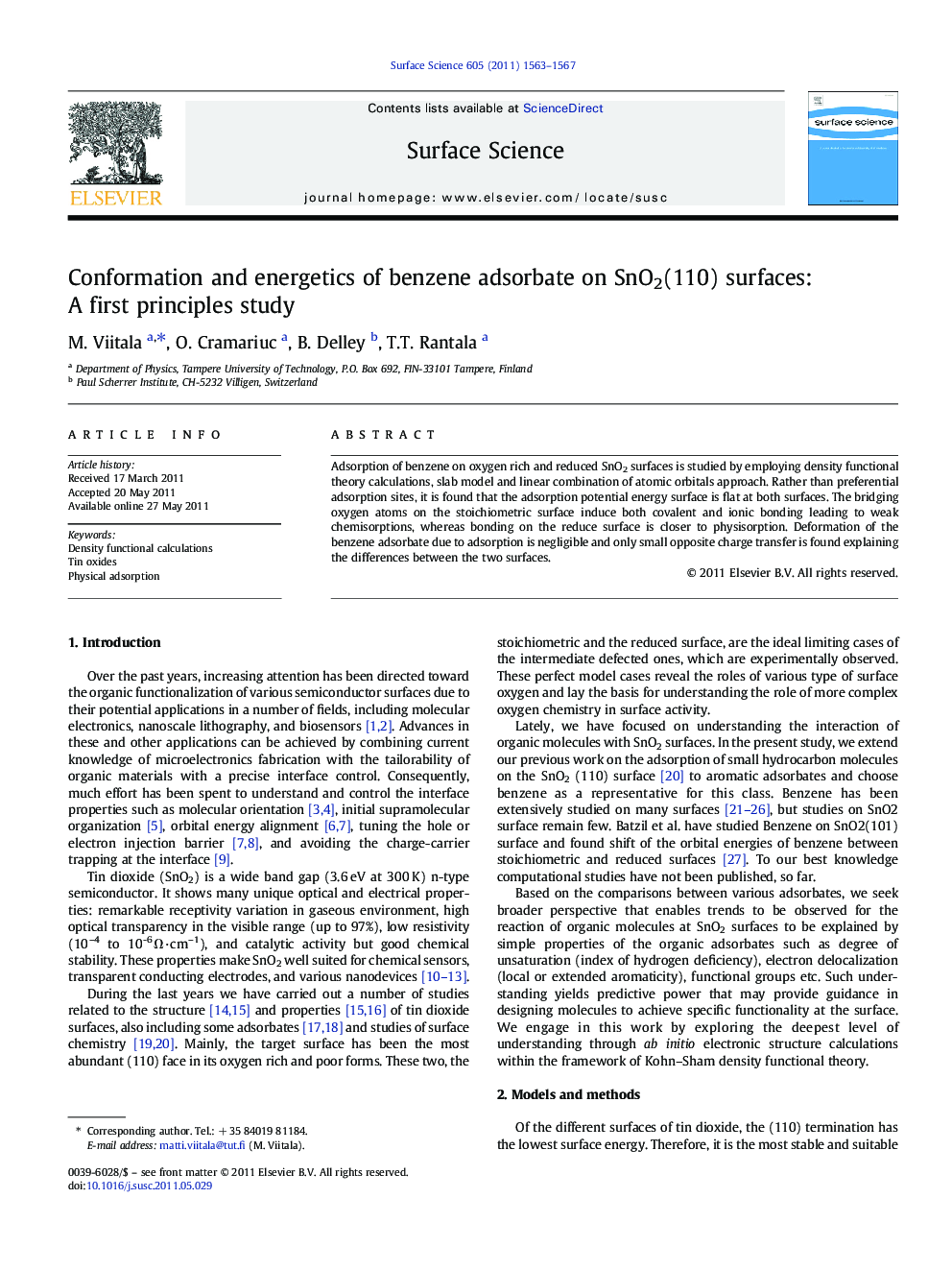| Article ID | Journal | Published Year | Pages | File Type |
|---|---|---|---|---|
| 5423307 | Surface Science | 2011 | 5 Pages |
Adsorption of benzene on oxygen rich and reduced SnO2 surfaces is studied by employing density functional theory calculations, slab model and linear combination of atomic orbitals approach. Rather than preferential adsorption sites, it is found that the adsorption potential energy surface is flat at both surfaces. The bridging oxygen atoms on the stoichiometric surface induce both covalent and ionic bonding leading to weak chemisorptions, whereas bonding on the reduce surface is closer to physisorption. Deformation of the benzene adsorbate due to adsorption is negligible and only small opposite charge transfer is found explaining the differences between the two surfaces.
⺠There is no strongly preferential adsorption site on the surface, so benzene remains mobile. ⺠Removing oxygen from the surface weakens the adsorption. ⺠Most significant effect weakening the adsorption is the negative charge of the surface.
